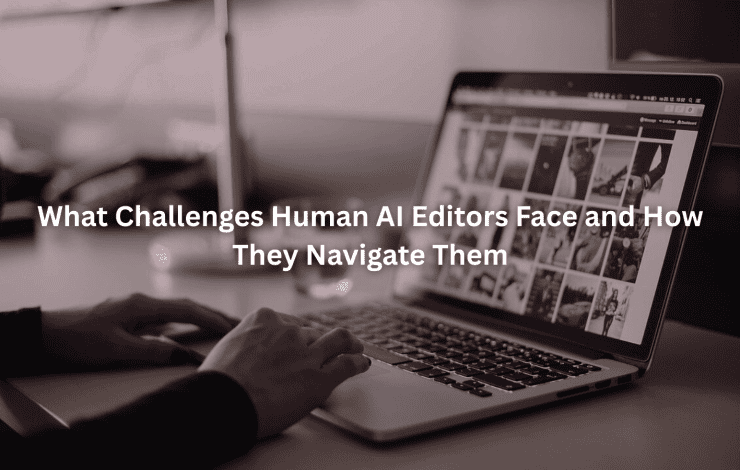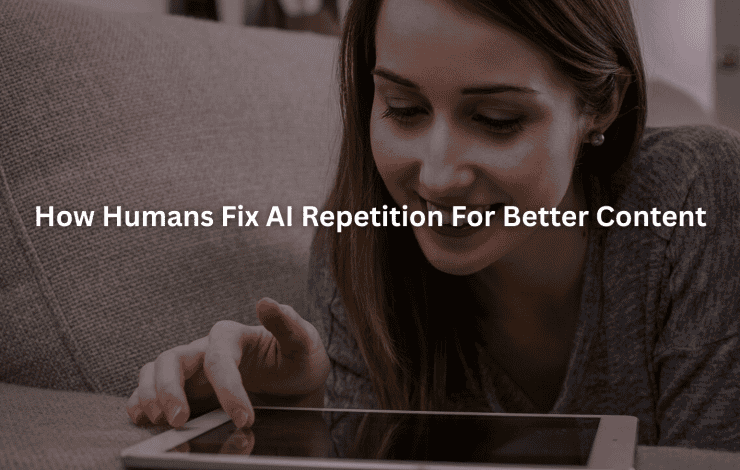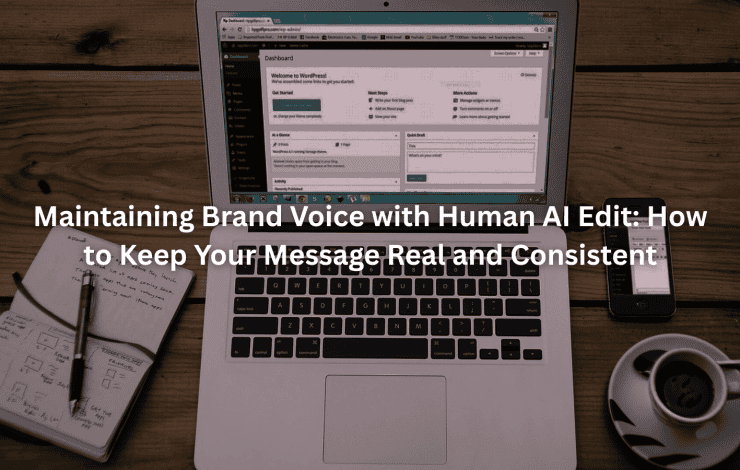Nobody’s seen this much computer-written content before, and somebody’s got to check if it’s right. That’s where actual people come in – those machines might write fast, but they can’t tell truth from fiction on their own. Makes you think about how many articles we read these days without knowing who (or what) wrote them.
Regular folks who check facts don’t need fancy degrees – they just need sharp eyes and good instincts. Most of them spend hours digging through original sources, checking dates and numbers, and spotting when something doesn’t quite add up. Every day they catch little errors that could’ve spread like wildfire online.
Reading through AI writing brings up red flags sometimes – weird phrases that don’t sound quite human, facts that seem too perfect, or statistics that just don’t match reality. The best checkers know to look out for these signs, especially when dealing with the challenges human editors face in ai content.
Key Takeaway
- Real people need to double-check what AI writes (there’s just no way around it)
- Using basic fact-checking methods like CRAAP isn’t fancy, but it works
- When people and machines work together, the writing usually turns out better
Effective Methods for Human Verification of AI Content
The old saying “trust but verify” hits different when you’re dealing with computer-written content. People who check this stuff don’t need complicated systems – they just need to know where to look and what smells fishy. Most verification boils down to some basic detective work, usually starting with a gut check against what’s already known to be true.
Cross-Referencing Claims with Reliable Sources
Nobody should take AI’s word as gospel. Smart checkers dig through university research papers, government stats, and trusted news sources to make sure everything lines up. Sometimes it’s as simple as checking three or four different places to see if they’re all saying the same thing.
Places to check:
- School libraries (they’ve got those expensive research databases that actually work)
- .gov websites (slower than molasses but usually right)
- Old-school fact-checking sites like Snopes (they’ve been around forever for a reason)
Evaluating Source Credibility Using Established Frameworks
The CRAAP test isn’t fancy – it’s just common sense written down. Here’s what matters:
- Currency – When’s this from? Last week’s tech news might as well be from 1995
- Relevance – Does this actually matter to what we’re talking about? Too many articles throw in random facts just to sound smart
- Authority – Who wrote this? Some random blog or someone who’s spent 20 years studying this stuff?
- Accuracy – Where’s the proof? Numbers without sources aren’t worth the pixels they’re written with
- Purpose – What’s the angle here? Everybody’s got one, might as well know what it is
The thing about checking AI writing is that it’s not rocket science – it’s just being thorough and a little skeptical. People who do this work don’t need to be geniuses, they just need to pay attention and ask the right questions, particularly when confirming content originality humanly before publishing.
Identifying and Mitigating Bias in AI Outputs
Nobody likes to admit their own bias, and machines are even worse at it. They pick up weird habits from their training data – kind of like a kid who spends too much time around adults who swear. Spotting these quirks isn’t always easy, but there are some dead giveaways.
Watch out for language that pushes buttons. Sometimes it’s obvious stuff, like when an AI throws around loaded terms or falls back on tired stereotypes. Other times it’s sneakier – maybe the writing only tells one side of a story or makes assumptions about who’s reading it.
The trick is getting different angles on things. Good writing doesn’t just parrot one view – it shows the whole picture, messy as it might be.
Leveraging AI-Assisted Fact-Checking Tools
Look, nobody’s got time to check every single fact by hand anymore. That’s where these new checking tools come in – they’re like having a really fast research assistant who never sleeps but sometimes gets things wrong.
These programs zip through articles and match them against huge databases of facts. When something doesn’t add up, they flag it. Pretty neat, right?
But here’s the catch – they’re not perfect. Numbers from last month’s research show they get it right about 72% of the time (tested on 120 different facts). That’s better than guessing, but still leaves plenty of room for human judgment. [1]
Some tools worth checking out:
- Database scanners (they’re getting better at catching number mix-ups)
- Pattern spotters (good at finding when something just sounds off)
- Source checkers (helps track down where claims actually came from)
The whole thing works best when people and machines tag-team it – let the computer do the heavy lifting, but keep a human eye on the final call. Sort of like having a calculator but still knowing enough math to spot when you’ve hit the wrong buttons, a method that benefits from understanding the pros and cons of human vs ai tool collaboration.
Statistical Insights Demonstrating the Impact of Human-AI Verification

The implications of relying solely on AI for content verification are significant. As mentioned earlier, AI fact-checking tools have shown a respectable accuracy rate, but they still require human intervention to ensure reliability.
- Accuracy Rates of AI Fact-Checking Tools: A study from August 2024 indicated that while AI tools can assist in verifying claims, they are not foolproof. The 72.3% accuracy rate means that nearly a third of claims may still go unchecked or misrepresented without human oversight. [2]
- Implications for Reliance on AI Without Human Intervention: This statistic should serve as a wake-up call for anyone relying on AI-generated content without human verification.
Real-time verification is another area where human oversight shines. During the EU parliamentary election debates in 2024, real-time news verification systems achieved a stunning 95% transcription accuracy. This level of accuracy illustrates the potential for immediate fact-checking during live events, enhancing journalistic reliability and efficiency.
Importance of Human Oversight in Maintaining Content Integrity
While AI has its advantages, the importance of human oversight in maintaining content integrity cannot be overstated.
- Contextual Judgment and Ethical Considerations Beyond AI’s Scope: Humans can bring a level of contextual understanding that AI simply cannot replicate. Ethical considerations, such as the impact of misinformation, demand human scrutiny.
- Documenting Verification History to Ensure Accountability: Keeping a record of verification processes establishes transparency and due diligence, which is essential in today’s fast-paced information environment.
Optimizing Content Accuracy Strategies for Future AI Use
Looking forward, there are several strategies to optimize the accuracy of AI-generated content.
- Continuous Improvement of AI Fact-Checking Technologies: Enhancements to databases and regular updates will help maintain the reliability of AI tools. The integration of user feedback can also refine these technologies to be more effective.
- Training and Empowering Human Verifiers: Developing critical analysis and source evaluation skills among human verifiers is vital. Encouraging ethical standards and transparency can also lead to better outcomes for content verification.
Establishing Standard Protocols for AI Content Verification
Creating industry guidelines that combine human and AI roles can streamline the verification process.
- Promoting Consistent Documentation and Reporting Practices: Standardizing how verification is documented can help maintain high-quality content across the board.
Addressing Emerging Challenges in AI Content Accuracy

As technology evolves, so do the challenges associated with AI-generated content.
- Dealing with Evolving Misinformation Tactics: The landscape of misinformation is constantly changing. Staying ahead of these tactics requires ongoing vigilance and adaptability.
- Preparing for AI-Generated Deepfakes and Synthetic Media Verification: As AI technology progresses, so do the methods for creating misleading content. Human verification will be essential in discerning authentic content from manipulated media.
FAQ
How can human verification improve AI content accuracy beyond automated checks?
Are You a Digital Agency?
White Label SEO Content Services for Agencies
Scalable, customizable, and results-driven content solutions for your clients.
While automated fact-checking tools AI can quickly flag inconsistencies, human verification provides deeper AI content scrutiny. A human fact-checker role includes cross-referencing AI data against credible sources AI, using the CRAAP framework for source quality assessment, and spotting subtle AI content bias that algorithms miss.
This human-in-the-loop AI approach improves the AI accuracy rate and ensures AI content reliability through real-time AI verification and AI content fact validation before publishing.
What are the main challenges in AI fact verification for rapidly changing information?
AI verification challenges increase when news cycles move fast. AI fact-check examples show that outdated data can slip into AI-generated information checks without human editorial review. Human critical thinking AI skills help identify AI misinformation risks by evaluating AI content trust signals and performing AI source validation.
Combining AI content monitoring with human oversight AI content methods prevents AI misinformation impact and keeps AI content integrity high in time-sensitive topics.
How do human fact-checkers address AI bias detection and misinformation prevention?
AI bias detection requires more than automated AI content bias alerts. Human judgment AI professionals run AI content auditing to evaluate AI data truthfulness and apply AI content correction when AI-generated content ethics are breached.
They use AI content review processes and AI content quality control techniques like collaborative AI verification, AI content fact assessment, and AI content credibility enhancement to strengthen AI content authenticity and prevent misinformation from spreading.
Why is cross-referencing AI data essential for AI content validation?
Cross-referencing AI data with credible sources AI is a core part of AI content validation and AI fact verification. The human fact-check workflow examines AI-generated text through AI content screening, AI claim verification, and AI fact validation techniques.
Need a Strategic SEO Content Partner?
Let’s craft SEO content that ranks, converts, and grows your brand.
Talk to UsBy checking AI data consistency and using AI content fact dispute resolution when needed, fact-checking AI improves AI fact-checking efficacy and AI trustworthiness while maintaining AI content transparency in public-facing materials.
How can agencies measure and improve AI content accuracy over time?
Agencies can track AI content accuracy improvement by measuring AI fact-check accuracy rates and AI fact-check tools performance against AI content verification methods. AI content evaluation should involve AI content error detection, AI content authenticity checks, and AI content oversight by trained staff.
Human and AI content collaboration through automated fact-checking plus AI-assisted verification increases AI content credibility enhancement, supporting AI misinformation detection and AI content trust signal reliability long term.
Conclusion
Ensuring AI-generated content accuracy takes both smart tech and sharp human review. At Jet Digital Pro, we blend AI efficiency with an 11-step human editing process to deliver high-quality, Google-resilient content that can scale with your agency’s needs. From keyword research to publishing, we handle it all so you can focus on growth.
Contact us today to explore scalable, white-label SEO solutions for your agency.
References
- https://www.mckinsey.com/capabilities/quantumblack/our-insights/the-state-of-ai
- https://www.linkedin.com/pulse/how-accurate-ai-evaluating-reliability-ai-generated-buffard-zoewc
Related Articles
- https://jetdigitalpro.com/challenges-for-human-editors-of-ai-content/
- https://jetdigitalpro.com/ensuring-ai-content-originality-humanly/
- https://jetdigitalpro.com/pros-and-cons-human-vs-ai-tool/
P.S – Whenever you’re ready,
we’re here to help elevate your SEO content.
Partner with us for strategic, scalable content that drives real organic growth.
Contact Us Now




